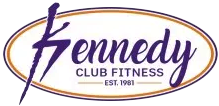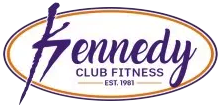 Overwhelmed by all those hard-to-pronounce words on the ingredient list? You’re not alone.
Overwhelmed by all those hard-to-pronounce words on the ingredient list? You’re not alone.
To get in and out of the store with your sanity intact, adds Caroline Kaufman, RDN, “have a game plan and know what you are looking for so you can quickly scan the label for the most important information.” Here’s what you should zero in on.
Fats
If most of the fat content comes from healthy unsaturated fat, you’re probably good to go. If the fat is mainly saturated and/or the product has any trans fat, put it back on the shelf. Trans fat has been shown to increase levels of “bad” LDL cholesterol while decreasing levels of “good” HDL cholesterol.
Don’t be fooled by a label that lists 0 grams (g) trans fat. Because of a labeling loophole, a product can contain up to 0.5g trans fat per serving and say it has none. Check the ingredient list: If it includes partially hydrogenated oil, then there is trans fat in there. Shortening is another source of trans fat.
Sodium
Excess sodium can raise blood pressure, which increases heart disease risk, and it may be a sign of a more highly processed food, Kaufman says.
We set the cutoff for the Health Must-Eat List at 805 milligrams (mg) per serving—about a third of the recommended daily limit for sodium (2,300 mg).
Fiber
Look for at least 3g per serving in any product that contains grains, including bread, crackers, pasta and even some soups.
Serving size
The amounts shown on the label refer to a single serving. If you tend to eat more than the listed serving size in a single sitting, do the math to get the right numbers.
Calorie count
For many people, this is the first and most important stop on the label. But a higher-calorie food might be worth eating if it also contains lots of nutrients.
Sugars
This number doesn’t distinguish between naturally occurring sugars (like lactose in milk or fructose in fruit) and added sugar (like high-fructose corn syrup or brown rice syrup). A better move: Look at the ingredients for sources of added sugar.
Look for the words sugar, as in palm sugar or invert sugar; sweetener, as in corn sweetener; or syrup, as in brown rice syrup or malt syrup. Also watch for words ending in ose, like fructose or glucose.
Added sugar
If sugar is one of the first two ingredients, don’t bring it home. Ingredients are ordered by volume, so the higher up on the list an ingredient is, the more of it a product contains. This is an easy way to spot foods that include a lot of added sugar. (Naturally occurring sugar won’t be listed here.)
But this method isn’t foolproof. “Sometimes, manufacturers split up sugar into dextrose, high-fructose corn syrup, cane crystals and so on, so none of them are the first ingredient, even though if you added them up, they would be,” explains Walter Willett, MD. “You might consider avoiding any product if there is sugar in more than one form.”
Vitamins and minerals
The Daily Value (DV) is the amount of each nutrient that’s considered sufficient for most healthy adults. A food that contains.
Whole grains
To ID heart-healthy and fiber-rich whole grains, look for the word whole before the name of any grain, as in whole wheat. Popcorn, oatmeal and quinoa are also considered whole grains. If you see the word enriched before a grain, it’s a sign that the grain has been refined, meaning it has been stripped of the germ and bran, which pack most of the grain’s nutrients including fiber.

